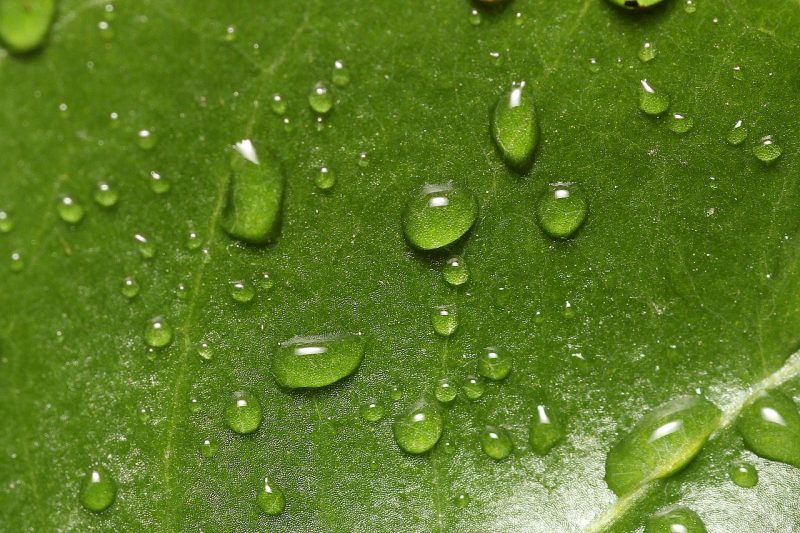If you’re curious about why do plants need to control the loss of water, the simplest explanation is that water is essential for photosynthesis and survival in challenging conditions. Remember that water is a limiting factor for photosynthesis, and it’s one of the things you should ensure to provide for the plants you grow. If you cultivate any plant species, it’s knowledge in these areas that you must understand to avoid drawbacks.
Below is an easy-to-understand explanation of the importance of this mechanism and how the plants actually do it. You can use the information when growing and maintaining your plants properly. Lastly, don’t forget to provide the ideal growing conditions and environment for your plants using structures like greenhouses or covers in the garden.

Why Do Plants Need To Control The Loss Of Water And How Is This Done?
Remember that temperature and water are influential factors for the plants to conduct photosynthesis. Therefore, plants can struggle under conditions that limit these areas, so they have to adapt and conserve water. This article will discuss two ways in how plants control the loss of water shortly.
But why do plants need to control the loss of water? Over time, different plant species such as cacti have specifically evolved to improve water retention. Besides the fact that water is a limiting factor of photosynthesis, the control of loss of water offers benefits such as cooling, better nutrient absorption, and support on the structure as the plant transpires.
By definition, transpiration refers to the loss of water in plants via water vapor. This is a beneficial process as plants need it for evaporative cooling, acquiring soil nutrients, gas exchange, and water uptake. However, plants need to control the loss of water because it is vital for driving biochemical processes.
If water is important for plants, why do plants need to lose it for various processes?
Overall, plants depend on water for growth and productivity. Plants must always find the balance between photosynthesis and transpiration and this is only possible by controlling the loss of water. Both processes are vital to plants, but there are risks that they regularly undergo, especially during challenging conditions.
How Plants Control The Loss Of Water
Before this article discusses the two methods of controlling water loss, it’s worth noting the factors that affect the transpiration rate. They include light, soil water, temperature, humidity, and wind. Controlling these environmental factors is something you should note to help prevent water loss on your plants.
Method #1. Through the leaves
Plants can reduce transpiration, which controls water loss using the hairs and coatings on their leaves. You’ll notice the waxy coatings on the leaves that give off a gray cast on the surface, but some plants also have reflective white hairs instead. These coatings slow the movement of air and reduce the plant’s temperature to conserve water.
Besides having coatings on the leaf surface, some plants have also adapted to have smaller leaves. Remember that having a smaller leaf surface area will also mean fewer stomata. And stomata is the part of the leaves where water escapes.
Therefore, fewer stomata from the smaller leaf surface reduce water loss, as evident on plants adapted to arid climates. More so, there are plants that even have their stomata only on the bottom epidermis. This is interesting to note as the leaf has three layers, and the part that is moist and responsible for photosynthesis is the one in the middle.
Method #2. Structural and physiological mechanisms
Besides having fewer stomata or smaller surface areas on the leaves, plants have also developed structural mechanisms to control water loss. For example, plants use water storage cells and use them after they absorb water through the roots.
Water storage in leaves and stems
The water will not be lost but will still be readily available when the plant needs it. Depending on the species, water storage can be the leaves or stems of the plant. On the other hand, there are also physiological mechanisms to help plants conserve water.
Specialized photosynthesis
For example, plants can control water loss through a photosynthesis method that they have developed over time. This is true with most plants that thrive in dry climates where they regulate their stomata’ opening. These plants can store carbon dioxide efficiently for use during the day and use the stomata only at night.
With this mechanism, the plants are not at risk of water loss during drought because of the lower metabolism rate. Therefore, they can maintain the critical mechanisms that require moisture to sustain life.
Conclusion
It’s incredible how plants have adapted to challenging conditions to sustain life. One would be curious about why plants need to control water loss as presented in different species. In general, water is crucial for the biochemical processes of plants, including photosynthesis.
Therefore, you’ll find leaves that have smaller leaf surface area, fewer stomata, plants with water storage, and specialized photosynthesis to combat water loss. Remember that plants need evaporative cooling, nutrient and water uptake, and gas exchange, but this is only possible with transpiration. In challenging climates and environments, plants have created mechanisms to ensure that the loss of water won’t have a drastic effect on their lives.
